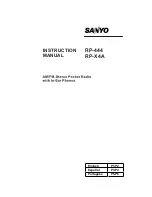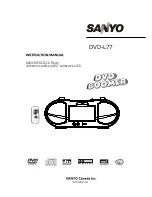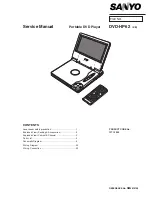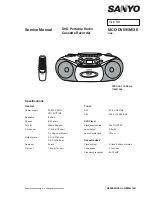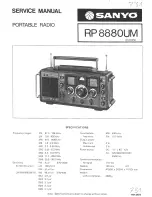
3.3. Rear panel
1.
Modulation in
2.
Trig in
3.
Count in
4.
Fan
5.
Power socket
6.
USB Device
7.
USB Host
3.4 Display introduction
The display screen display two groups of digits, the group on the left with 6 digits shows frequency, period
and attenuation and so on of the signals. And the 5 digits on the right show amplitude, offset, duty cycle and
so on of the signals. There are also letter and letter indicator lights on the display screen, to indicate present
waveform signal, parameter options and also units of parameters.
3.5 Keyboard introduction
There are totally 28 keys on the front panel (see front panel picture), the functions of which respectively are:
【
0
】【
1
】【
2
】【
3
】【
4
】【
5
】
【
6
】【
7
】【
8
】【
9
】
keys:
Digits inputting key.
【
.
】
key:
Point inputting key.
【
-
】
key:
Minus inputting key, press this key to input minus under offset and
waveform edition option. Press this key to enable or disable the key-
tone circularly under other options.
【<】
key:
Move the cursor left; delete the input when inputting digits.
【>】
key:
Move the cursor right.
【
Freq/Period
】
select frequency and period circularly; disable calibration process when
calibrating.
【
Ampl/Offset
】
keys:
select amplitude and offset circularly.
【
Width/Duty
】
key:
select pulse width, duty cycle of square or symmetry of Ramp circularly.
【
FM
】【
AM
】【
PM
】【
PWM
】
【
FSK
】【
Sweep
】【
Burst
】
keys: press them to select respectively frequency modulation, amplitude
modulation, phase modulation, pulse width modulation, frequency shift
keying, frequency sweeping and burst functions, press again to return
back to continuous function.
-4-
1.
2.
3.
4.
5.
6.
7.




























